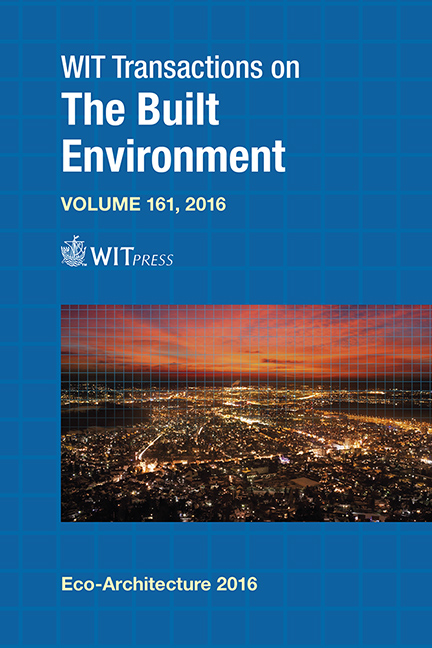The Potential Applications Of Eco-materials In Improving Sustainability In Buildings: The Case Of Cork
Price
Free (open access)
Transaction
Volume
161
Pages
12
Page Range
169 - 180
Published
2016
Paper DOI
10.2495/ARC160151
Copyright
WIT Press
Author(s)
J. Sierra-Pérez, I. López Forniés, J. Boschmonart-Rives, X. Gabarrell
Abstract
The use of natural materials in the construction and retrofitting of buildings is a recent strategy used to increase the environmental sustainability of cities. In this sense, the Iberian Peninsula concentrates 85% of the cork world production, a natural material with significant properties for the building sector. This study presents the results of a comprehensive analysis conducted by a project team made up of professionals from different sectors: building, energy efficiency, product design and ecology. The analysis comprises panels of experts, creativity sessions and questionnaires. This analysis aims to identify possible potential applications of cork into buildings, in addition to the existing ones; taking into account its physical, aesthetical and environmental properties. Regarding the physical properties of cork, its insulation capacity makes possible its current extended use as thermal and acoustic insulation material in the building envelope. But also due to its great water vapour permeability and good mechanical properties, cork can be used in the construction of green roofs, green façades or lightweight roofs. Moreover, cork is the only insulation material that can be installed without external cladding, because of its level of degradation. In this sense, the cork sector has to introduce design in this kind of products to help the acceptance of the strong visual aesthetic of cork. In short, the aesthetic of cork has to be promoted as a hardwood and natural material; and communicate the genuineness and purity of this material. In conclusion, the use of cork in buildings also contributes to the decrease of the environmental impacts and energy consumption, because of being a natural material and with high possibilities of recycling, reusing and recovering in the end-of-life of the building. For this reason, it is advisable to extend the life cycle approach in the selection of building materials and building ideation.
Keywords
sustainable construction, cork, insulation material, creativity, product design





